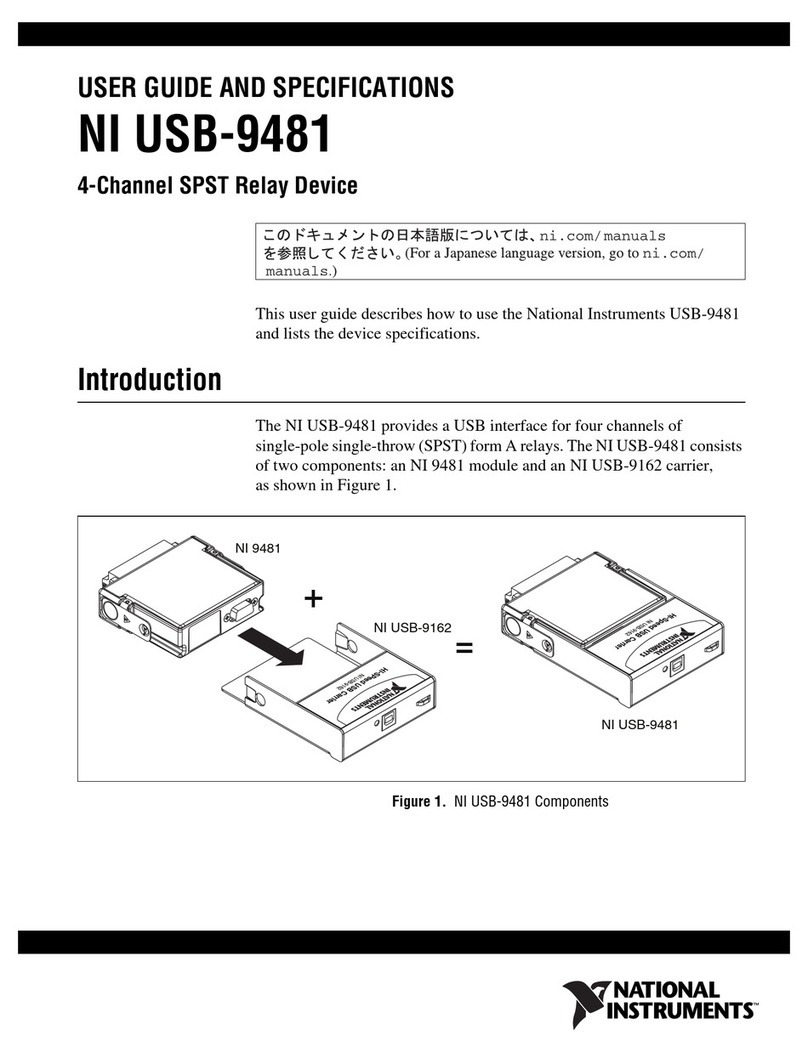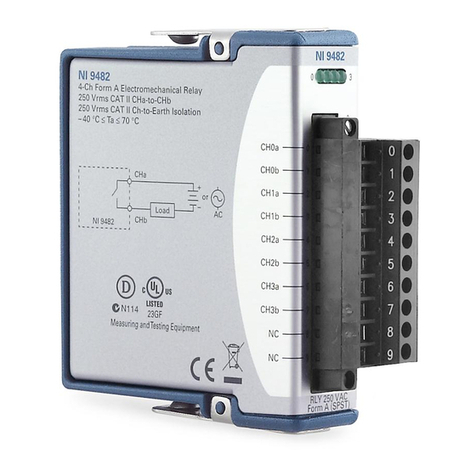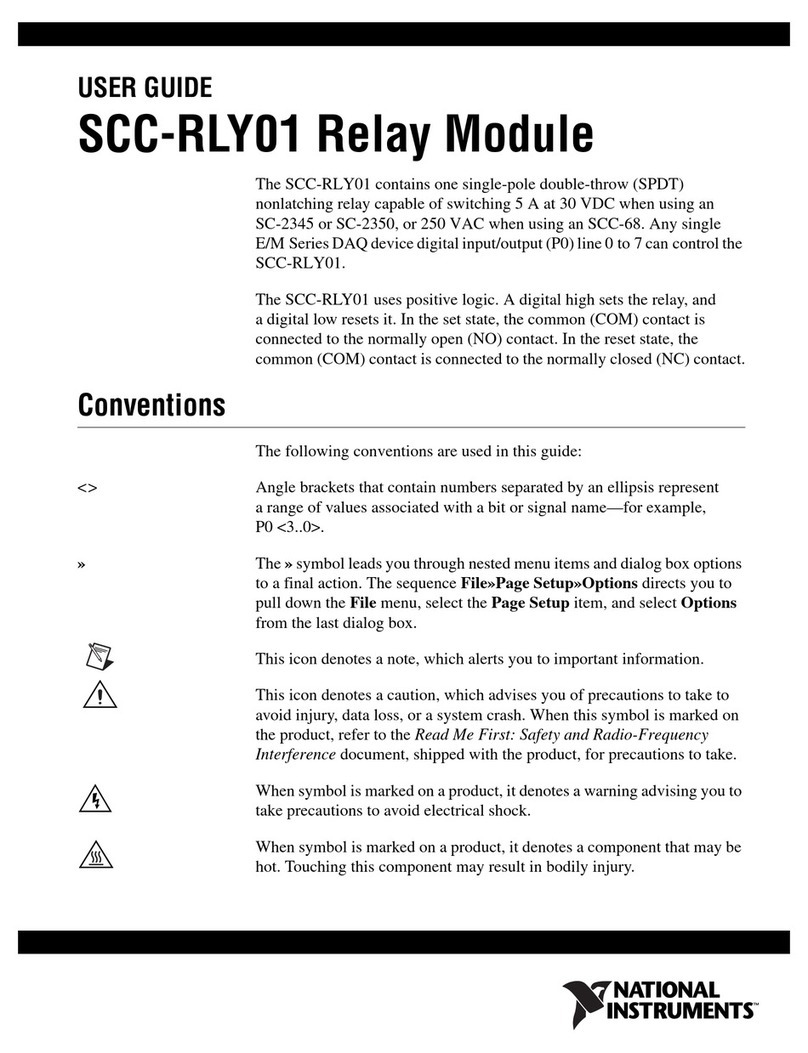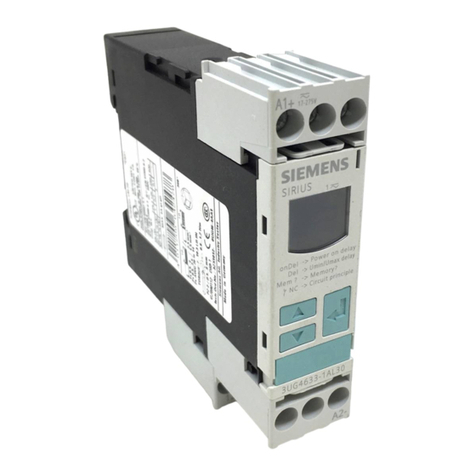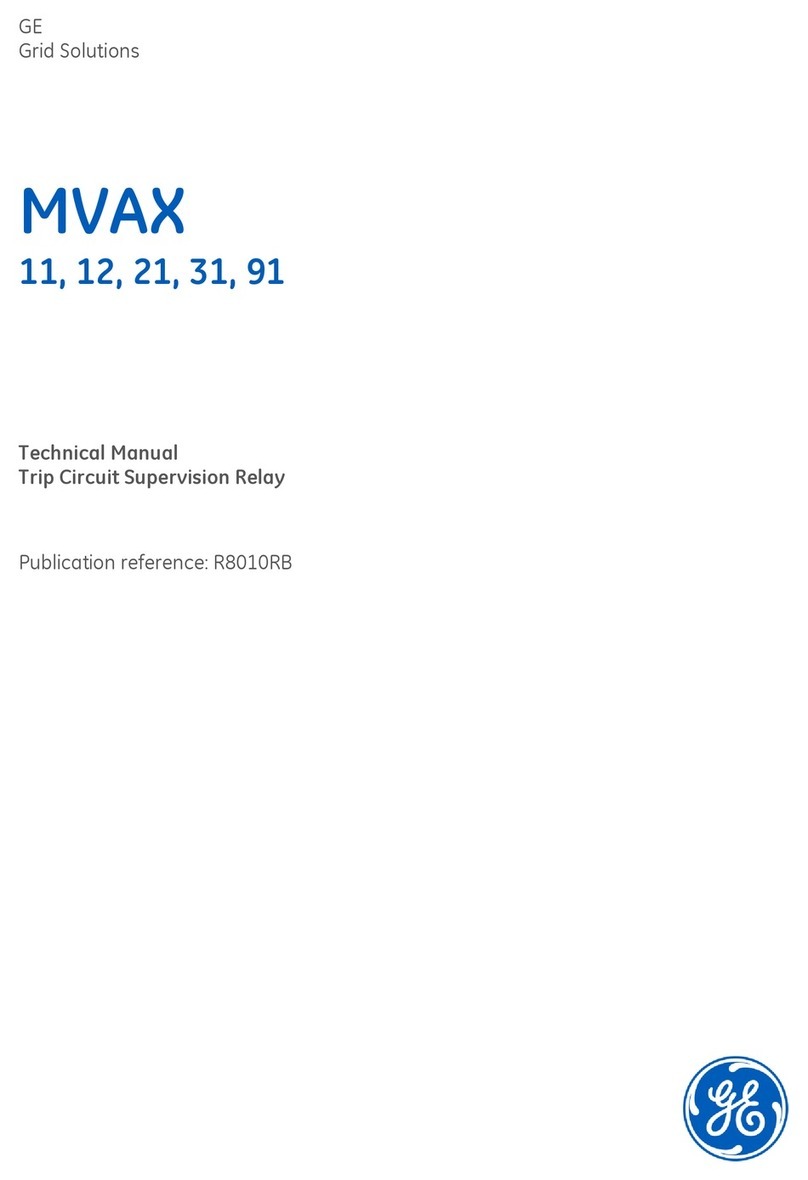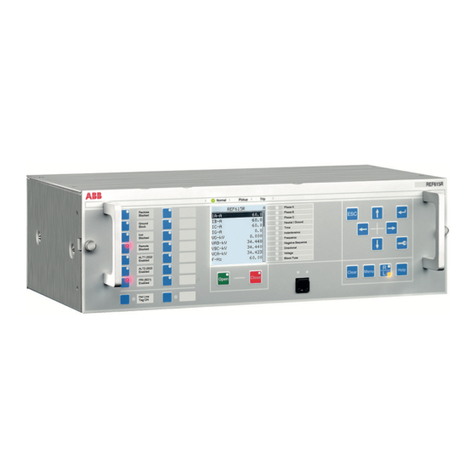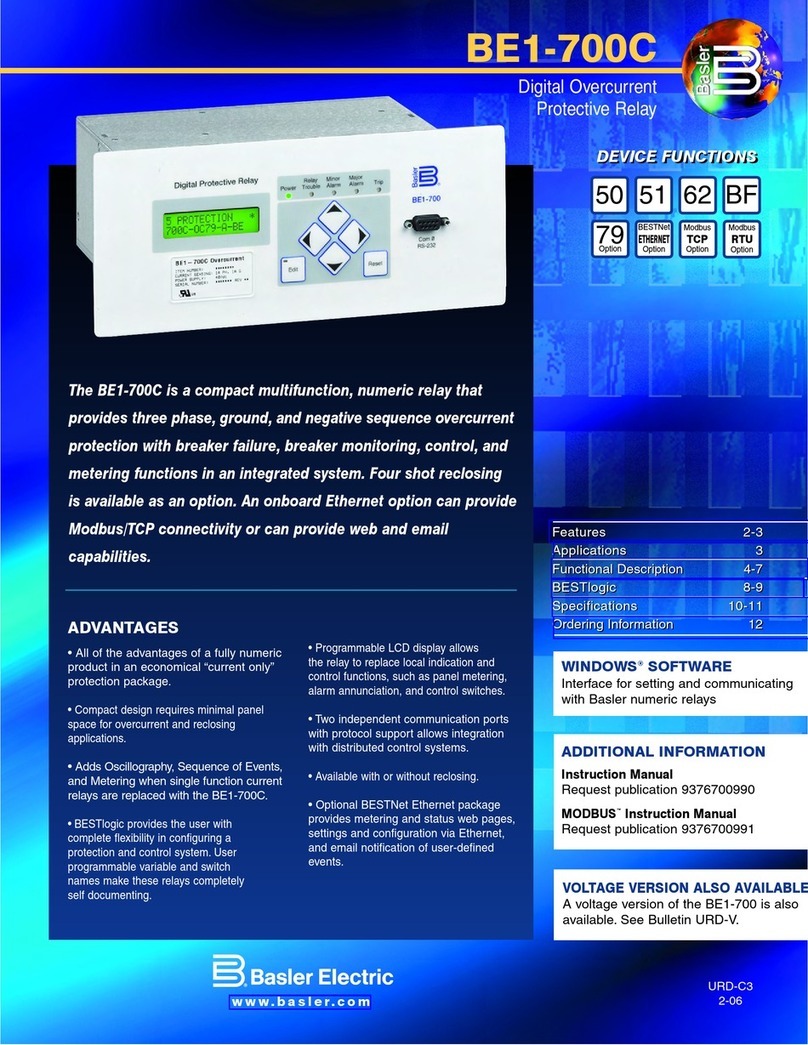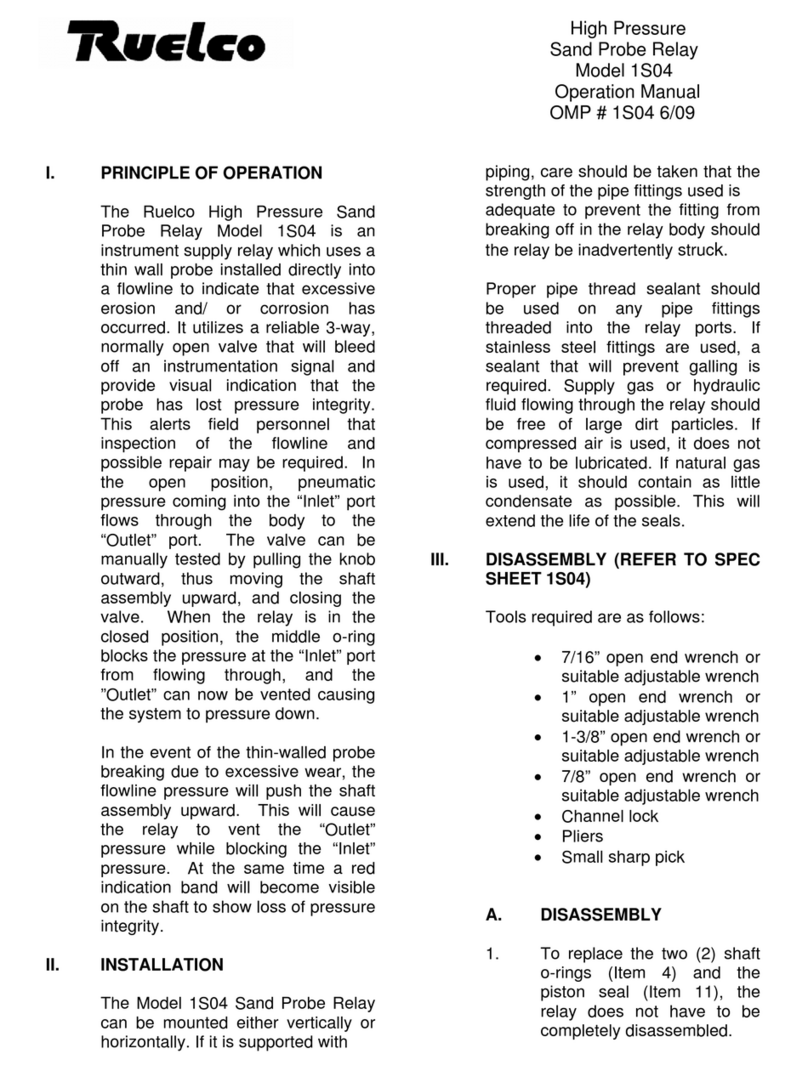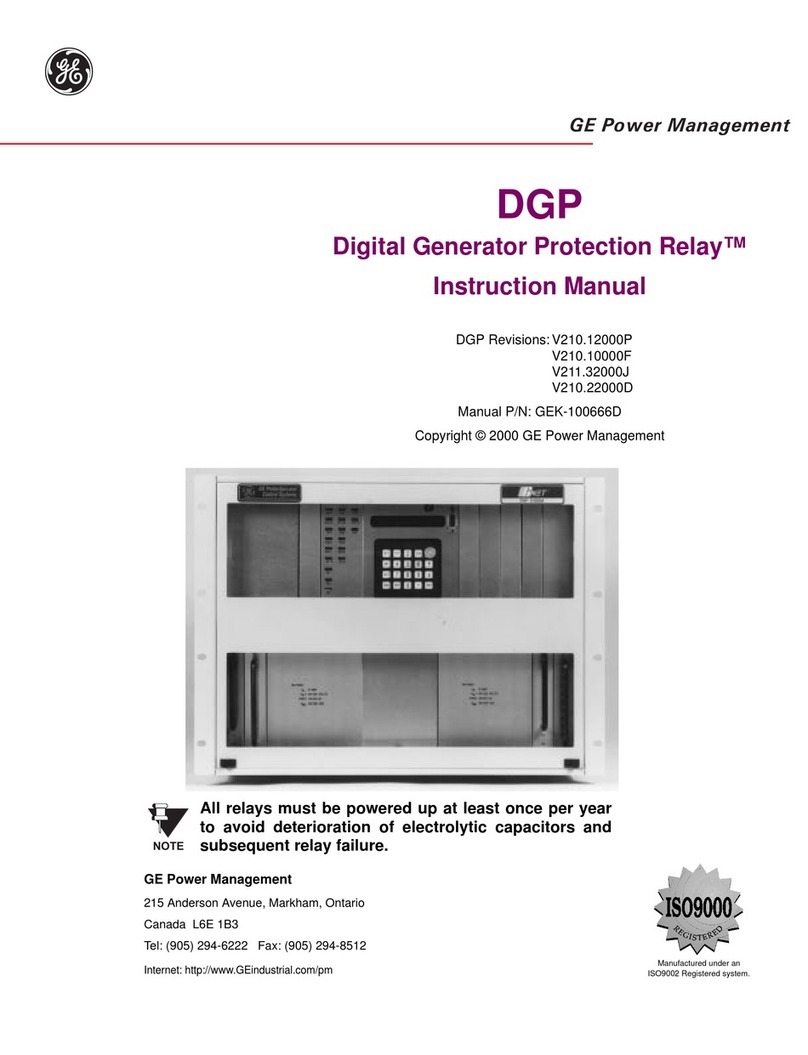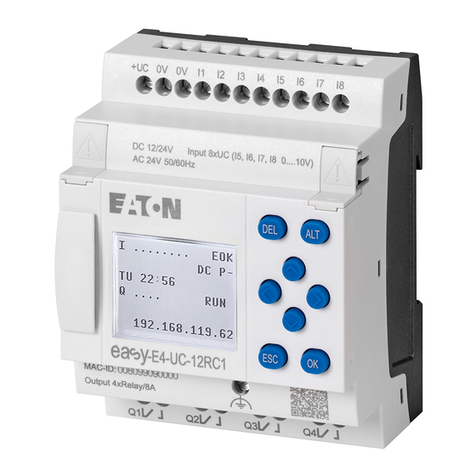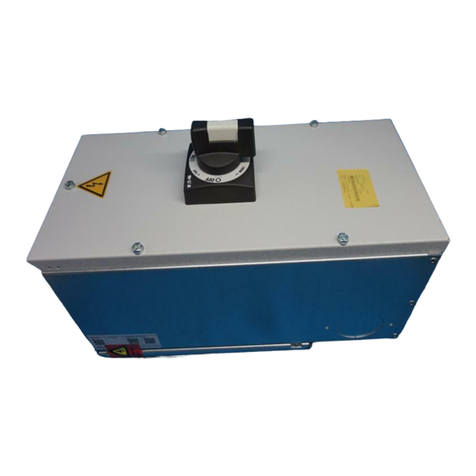
© National Instruments Corp. 9 cFP-RLY-425
The cFP-RLY-425 has eight SPST (single-pole single-throw)
electromechanical relays. The power-up state is OFF (open) to
ensure safe installation. In the ON state, the CHxand COMxrelay
contacts connect to form a short circuit. In the ON state, there is an
effective resistance of up to 50 mΩbetween the CHxand COMx
terminals, which causes a voltage drop.1For example, if the current
is 5 A, the voltage drop across the CHxand COMxterminals can
be as high as 0.25 V.
The amount of current the relay can switch depends on the voltage,
the type of load, and the ambient temperature. Refer to the
Specifications section for more information.
Protecting Contacts for Inductive Loads
When inductive loads are connected to the relays, a large
counter-electromotive force may occur at relay switching time
because of the energy stored in the inductive load. These flyback
voltages can severely damage the relay contacts and greatly
shorten the life of the relay.
It is best to limit flyback voltages by installing a flyback diode
across an inductive DC load or a metal oxide varistor (MOV)
across an inductive AC load.
In addition, the cFP-RLY-425 has internal protection MOVs to
prevent excessively high voltage from being applied across the
contacts. The MOVs are located between the CHxand COMx
contacts of each relay. However, National Instruments
recommends the use of a protection circuit across each inductive
load. The flyback protection causes a small leakage current, which
is detailed in the Specifications section.
Refer to the NI Switches Help for information about selecting and
installing contact protection circuits. Go to ni.com/manuals and
select Current Manual Revisions»Switches»Software»
NI Switches Help.
Status Indicators
After you install the cFP-RLY-425 onto a backplane and apply
power to the network module, the green POWER indicator lights
and the cFP-RLY-425 informs the network module of its presence.
When the network module recognizes the cFP-RLY-425, it sends
1 At the end of relay life, the path resistance rises rapidly above 1 Ω.
